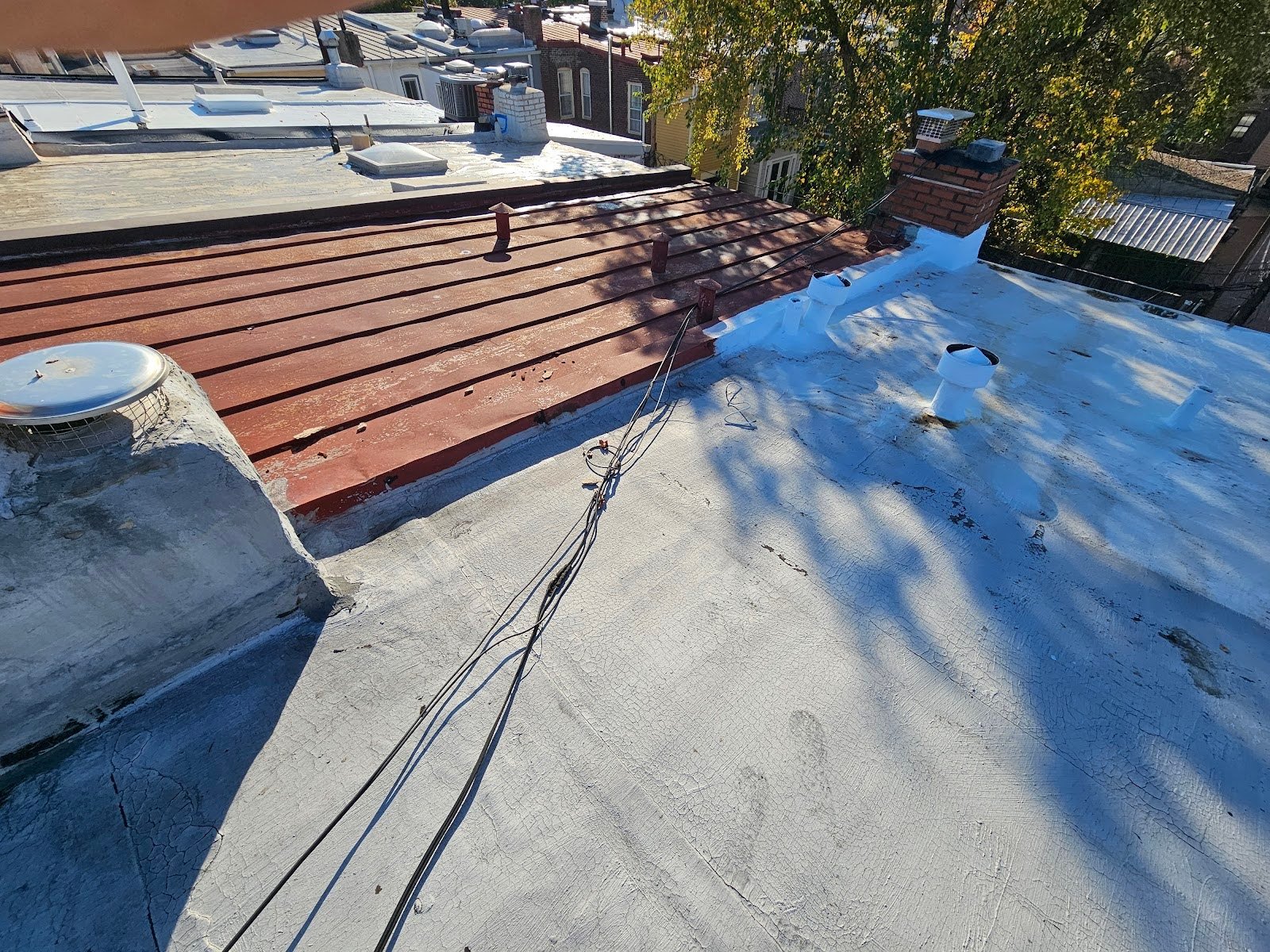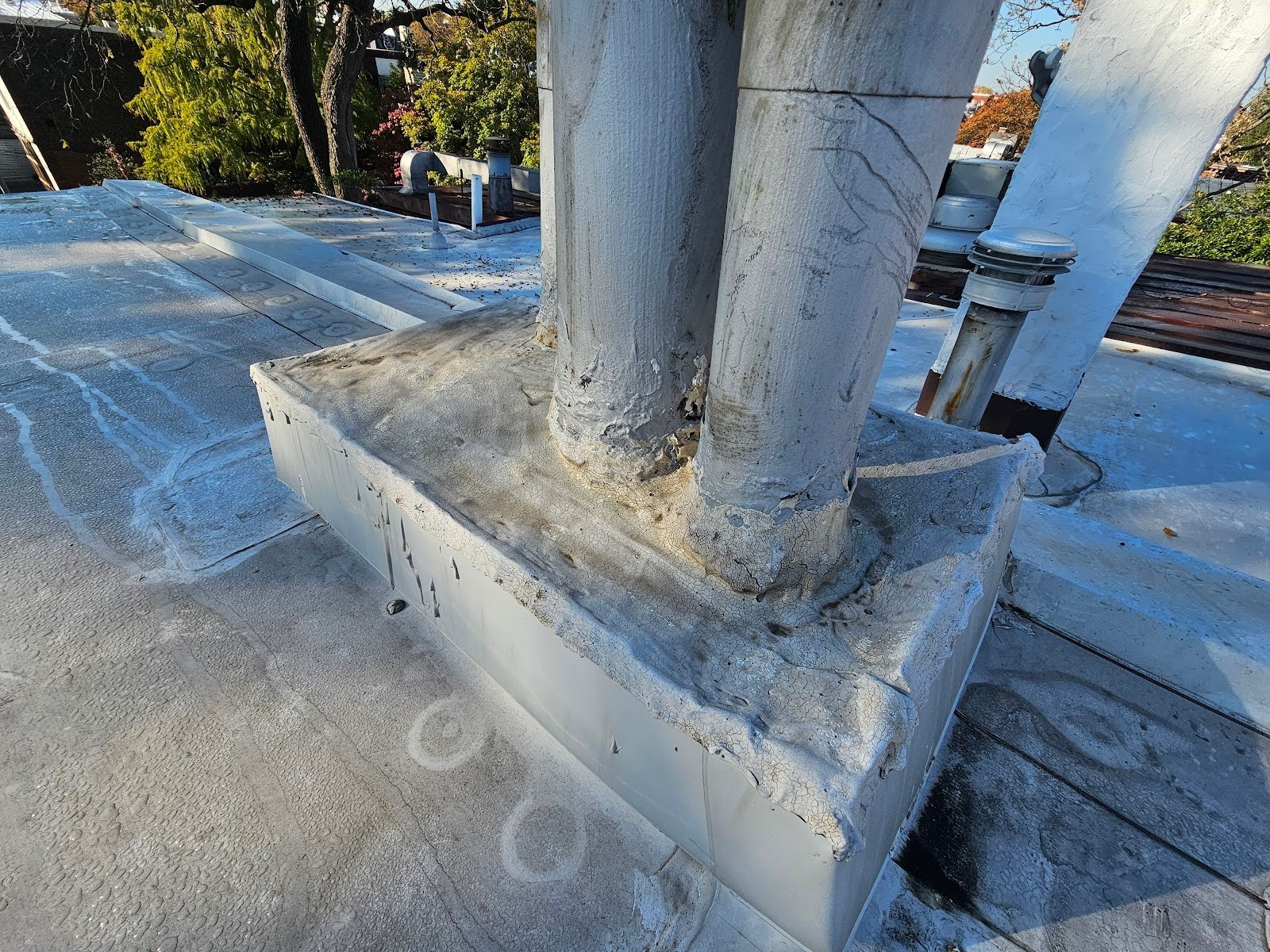Best Practices for Roof Termination
The majority of roofs, on more traditional buildings, here in Washington DC though, instead are often built with a rear termination that leads to a gutter. The rear termination essentially will transition or terminate the roof system. Usually the transition adjoins to a metal termination. Some of the most common types of metal terminations are drip edges. In the case of standing seam metal roofs, which are often used in historic circumstances for low slope roofing, the same material as the roof itself, would be used to make the transition from the low slope, near horizontal planar surface, to the vertical surface which would then run into the gutter.

Polymer and synthetic type materials which are commonly used today and work very well because of flexibility and durability, will work similarly but will instead transition to something like a metal drip edge. The metal drip edge will connect the material at the top of the roof, at the rear edge, and then run from there downwards into a gutter. A gutter is basically an open channel that will appear to be installed near horizontally on the face of a building, and will actually be intentionally installed with slope or grade.
This slope or grade is essentially an intentional unlevelness. In most cases we’d recommend having at least one quarter inch per linear foot of unlevelness throughout the run of the gutter. This run will lead towards a downspout. Normally the downspout will be installed at or near the low end of the gutter and then from there will run towards the ground or to an underground rain leader which will divert the water away from the building.

So far, everything we’re talking about really is related to the roofing system, but as part of the substrate framing, there should be a fascia board which ties the roof framing together. This fascia board isn’t really part of the roof at all, but the roof depends on it because the gutter is hung from the fascia board. The hanging or mounting of the gutter is important because the gutter has to be secured and the roof alone can’t normally support the weight of a gutter especially when a gutter becomes filled with leaves and water which happens from time to time even in cases where the gutter system is well built.
Gutters require routine maintenance, otherwise as they fill with leaves from natural leaf fall from any trees surrounding the roof. The flow of water will be deterred slightly at least and water will not consistently flow towards the drain. As that water builds up, the gutter becomes much heavier and it needs to be firmly mounted. The fascia board is normally the substrate material which connects the gutter to the framing. There are several different methods of attachment, but long screws with brackets are one of the most common modern types of attachment systems.

In the picture above, you can see that the wood that is beside the gutter, not running behind the gutter, but on the side instead is deteriorated and shows both signs of checking and rot. This particular board is called a rake board. The boards that run alongside the roof, particularly in gable type roofs are rake boards, but low slope roofs seldomly have rake boards, they’re just not as prevalent as you might find in a gable roof configuration.
When a low slope roof is built adjacent to another roof on either or both sides, it will not have a rake board if the roofs between this particular roof and the neighbor’s align. In this example though with the photographs, there is not an adjacent roof against this roof so this roof has a portion of a rake board.
In these particular pictures, you can see that the underside of the projecting portion of the roof, which would be referred to as a soffit, has deteriorated and has collapsed.

We provide this information here on our blog to help our customers and future clients and we recommend every building owner in DC who values the longevity of their roof (and their investments) and building use a contractor who values the simple and important principles of proper roof construction like Dupont Roofing DC. Learn more about our company and the proper techniques of working with roofing on historic buildings in Washington DC here on our blog at DupontRoofingDC.com, and you can call us at (202) 840-8698 and email us at dupontroofingdc@gmail.com. We are happy to help and at least talk through options.




